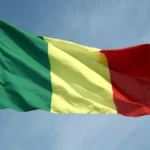
Denmark is a Scandinavian country that includes the Jutland peninsula and numerous islands. It is connected to nearby Sweden via the Oresund Bridge. Copenhagen, its capital, is home to royal palaces and the colorful Nyhavn harbor, as well as the Tivoli amusement park and the famous “Little Mermaid”. Odense is the hometown of the writer Hans Christian Andersen with a medieval core of cobblestone streets and half-timbered houses.
The Kingdom of Denmark is made up of 443 islands, to be exact. However, only 70 of the islands are inhabited.
The United Nations’ happiness rankings consistently have Denmark at or near the top. This is largely due to its economic prosperity, good medical care, social equality, and a very successful social welfare system, among other factors.
The tallest mountain in Denmark is only 170 meters tall – which is just over 550 feet.
Citizens of Copenhagen, the capital city of Denmark, are big fans of fine dining which may explain why they have more Michelin-starred restaurants than any other city in Scandinavia.
Denmark has over 12,000km of bike lanes and cycle tracks.
Lego block toys were invented in Denmark in 1958. The name comes from the Danish words “leg” and “godt” which mean “play well”. Over 320 billion bricks have been sold around the world.
The average person in Copenhagen bikes up to 3 km a day.
Forest preschools account for 10% of all Danish preschools.
Copenhagen’s the most visited city in Scandinavia and attracts around 30 million travelers a year.
There is no place in Denmark where you are more than 30 miles from the sea.
Denmark ranks as the 130th smallest country in the world – out of 195 countries.
Schooling is mandatory for students aged seven to sixteen in Denmark.
In 1989, Denmark became the first country to recognize same-sex unions.
There are more pigs in Denmark than people. The country produces 29 million pigs each year.
Denmark has over 7,000 miles of coastline.
Approximately 39% of all electricity generated in Denmark comes from wind power.
Greenland is part of the Kingdom of Denmark.
The largest manufacturer of wind turbines in the world is Vestas, located in Denmark.
Danes have won 13 Nobel prizes. With a population of only 5.6 million, that gives Denmark the highest per capita allotment of prizes of any country in the world.
The average wind speed in Denmark is 13 miles an hour.
The oldest continuously active film company in the world, Nordisk Film in Copenhagen, has been in operation since 1906.
Denmark’s the largest exporter, and producer of ranch mink in the entire world.
Denmark ranks fifth in the world among fish exporting nations.
Stroget, in downtown Copenhagen, is the longest car-free shopping street in the world.
Denmark has been inhabited continuously since 12,500 BC, with evidence of organized agriculture showing up as early as 3900 BC.
Queen Margrethe II, the current queen of the Kingdom of Denmark, can track her lineage back to the Vikings era over 1,000 years ago.
In the late 1800s, one out of every ten Danes left their homeland for America.
There are five major universities located throughout Denmark with the oldest established in 1479.
Denmark’s flag holds the Guinness World Record for being the oldest continuously used national flag.
The Roskilde Cathedral in Danish Zealand is the first gothic cathedral built from brick.
Denmark’s sales tax of 25% is one of the highest in the world.
Women are fully accepted into the clergy in Denmark, making up over 10% of that group.
Denmark also has one of the highest rates of income tax in the world with Danes paying as much as 45% of their income to the government.
The Danish language has evolved over the past 4,000 years as the Scandinavian tongue became more differentiated from Germanic languages.
Denmark is currently second in the UN’s World Happiness Report, just behind Finland.
Due to the high latitude of Denmark, summer brings much longer days, with up to 17.5 hours of sunlight at summer’s peak.
Denmark is home to the world’s two oldest operating amusement parks – Bakken and Tivoli.
Most Danes are multilingual, learning at least one foreign language and sometimes more. The most common languages learned include English, German, and Norwegian.
Danes love cycling and there are more bicycles in the country than people!
In Denmark, if you are unmarried on your 25th birthday, your family and friends are entitled to throw cinnamon on you.









